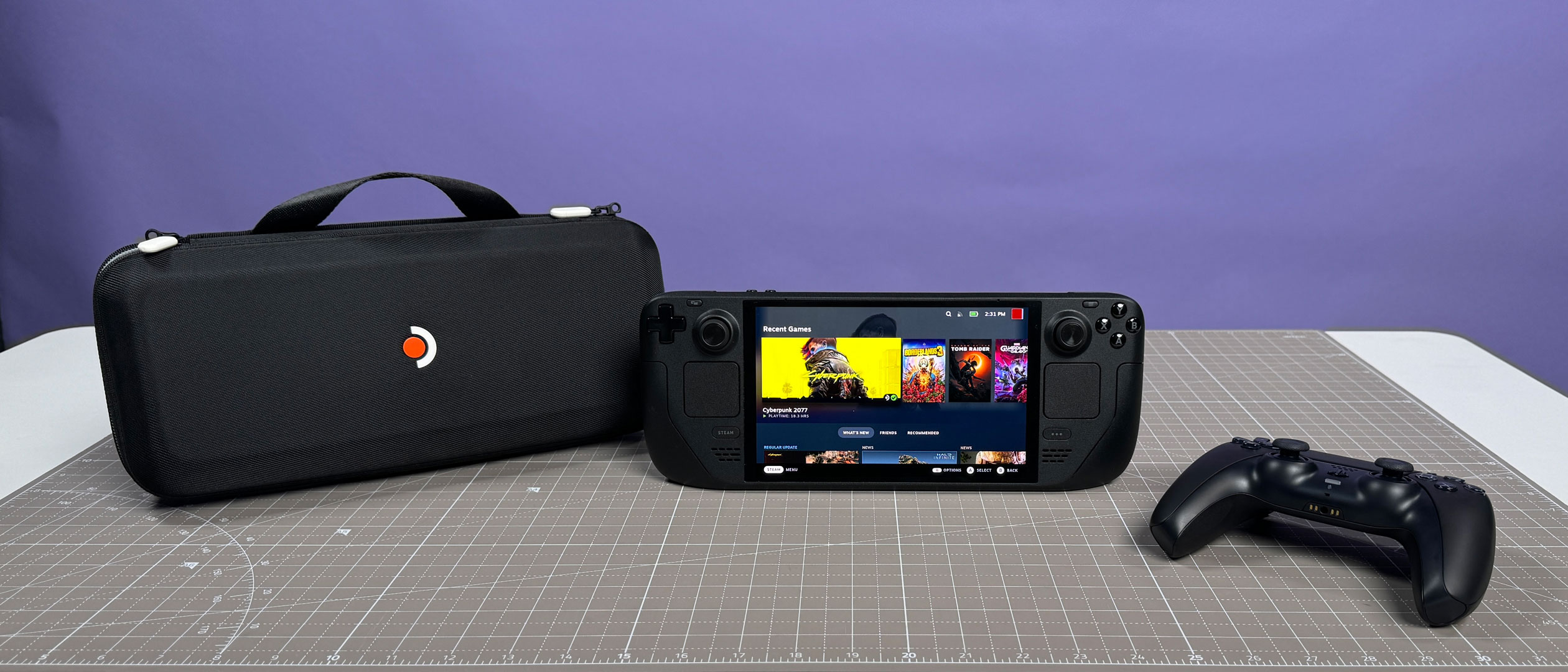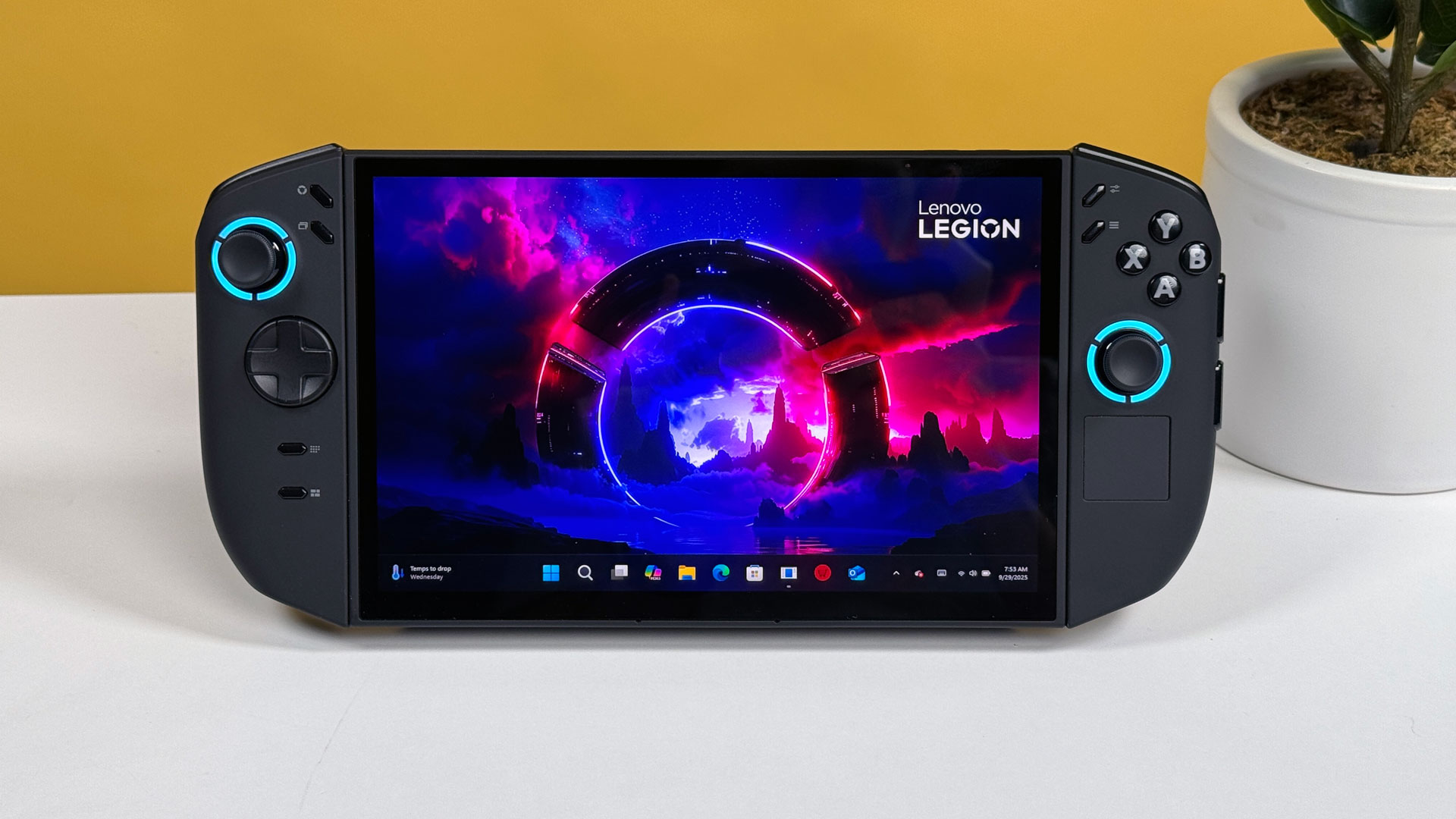Best Handheld Gaming PCs 2025: Windows and Steam Decks tested
Here are our favorite handheld gaming PCs, based on our testing and reviews.
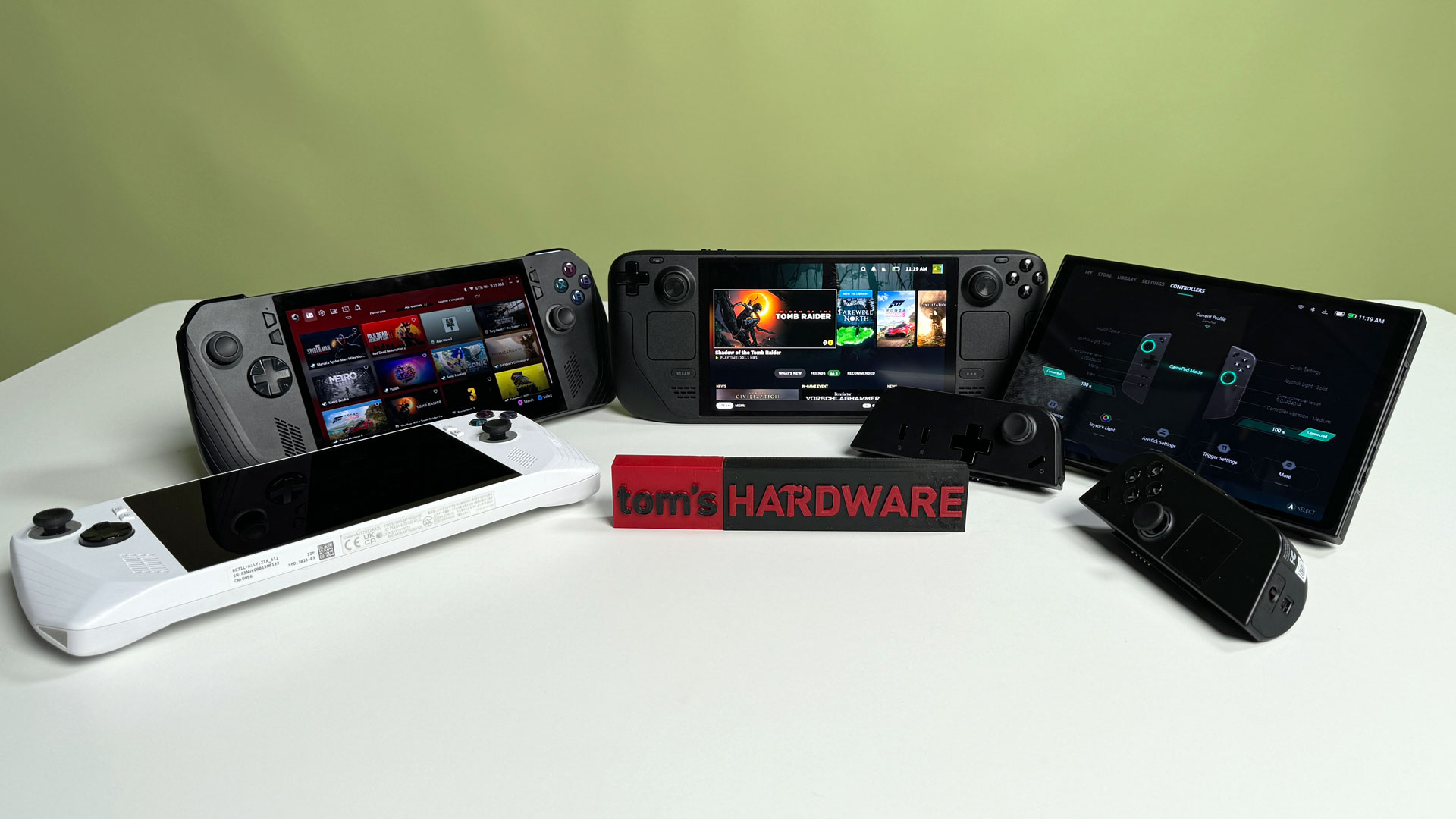
Update - December 22, 2025: We have removed the Valve Steam Deck (LCD) and Asus ROG Ally from this page, as they are no longer available for sale. Our other picks remain unchanged.
Portable gaming is nothing new. We've been through the Game Boy, the Game Gear, PS Vita, the Nintendo DS, Switch, and many more. But more recently, the idea of portable PC gaming has taken off, letting gamers take their libraries on the road with all of the tweaking and settings that playing on your own rig has to offer. The category was popularized by Valve's Steam Deck, and followed quickly by other big PC names like Asus, Lenovo, and MSI.
In order to help you find the best gaming handheld, we thoroughly tested the most popular models, benchmarking them with popular video games like Forza Horizon 5 and Cyberpunk 2077, checking to see how long their batteries last on a charge, measuring screen brightness and color gamut, and simply playing a bunch of games to see how the devices feel in our hands. We also consider price, budget, and operating system to help you determine the best bang for your buck. If you want to do more than gaming, you may want to consider some of the best gaming laptops for playing on the go.
Though Valve is making it sound like we won't see a true Steam Deck successor for a while, it is offering SteamOS to other companies, starting with Lenovo on the Legion Go S. Valve is also building a whole hardware ecosystem on the back of the Steam Deck's success, including the upcoming Steam Frame and Steam Machine. And 2025 has been the year of the Nintendo Switch 2, which isn't a direct competitor to the PC ecosystem but sold a ton of units.
The Quick List
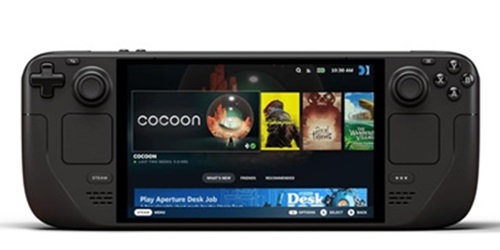
Best Handheld Gaming PC for Most People
The Steam Deck OLED combines price and performance, starting at $549 on Steam for a portable SteamOS-based handheld with a beautiful screen. It may not be as powerful as some of the AMD Ryzen Z1 Extreme-based options, but you get great ergonomics and plenty of improvements over the original Steam Deck. If most of your PC gaming library is on Steam, this is the one to get.
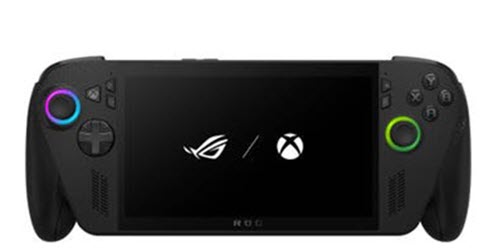
Best Windows Handheld Gaming PC
The $999.99 Asus ROG Xbox Ally X isn't cheap, but it's the best Windows gaming handheld you can get. Beyond the Ryzen AI Z2 Extreme processor with an RDNA 3.5-based GPU, you also get a new full-screen Xbox Experience that makes using the device easier than ever before. And the controller-style grips make this system extremely comfortable to hold.
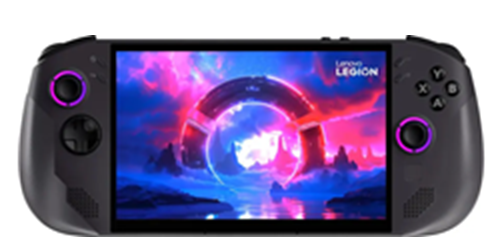
Best SteamOS Performance Handheld Gaming PC
If money is no object and you want the best performance you can get with SteamOS right now, the $829.99 Lenovo Legion Go S with Steam Deck will give you a great portable gaming experience. The Z1 Extreme and SteamOS deliver excellent gaming performance and the OS is far less clunky than Windows. But that price is a lot compared to some competitors, and its one touchpad is a bit clunky.
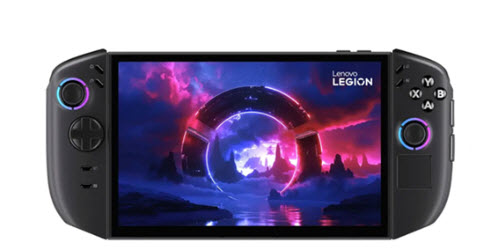
Switch-style Handheld Gaming PC
The Lenovo Legion Go 2 is premium in many ways, with an 8.8-inch OLED screen, an AMD Ryzen Z2 Extreme processor, a sturdy kickstand and detachable controllers. It's a full-featured system, but it's bulky and heavy at over 2 pounds, and you have to pay a premium price for this hardware.
Best Handheld Gaming PCs 2025
Why you can trust Tom's Hardware
Best Handheld Gaming PC for Most People
Specifications
Reasons to buy
Reasons to avoid
For many gamers, the Steam Deck OLED will hit a price/performance sweet spot. It starts at $549 with 512GB of storage or $649 for 1TB of storage on Steam. Either way, you get a 1280 x 800 OLED HDR display with up to 90 Hz refresh rate and a 50 WHr battery (slightly bigger than the original Steam Deck).
At 7.4-inches, you get a slightly larger screen than on the original Steam Deck, and you also get a boost from Wi-Fi 5 to Wi-Fi 6E. Performance is similar, though. You get the same chip specs, but on a 6 nm process.
And Valve even managed to make the Steam Deck OLED lighter than the original.
The Steam Deck OLED runs SteamOS, based on Arch Linux, and emulates Windows games. Not everything runs, but what does works pretty well (and you can install Windows on Steam Deck, if you want.) But it's also extremely easy to work with a controller, which you can't say about Windows these days.
Read: Steam Deck OLED review
Best Windows Handheld Gaming PC
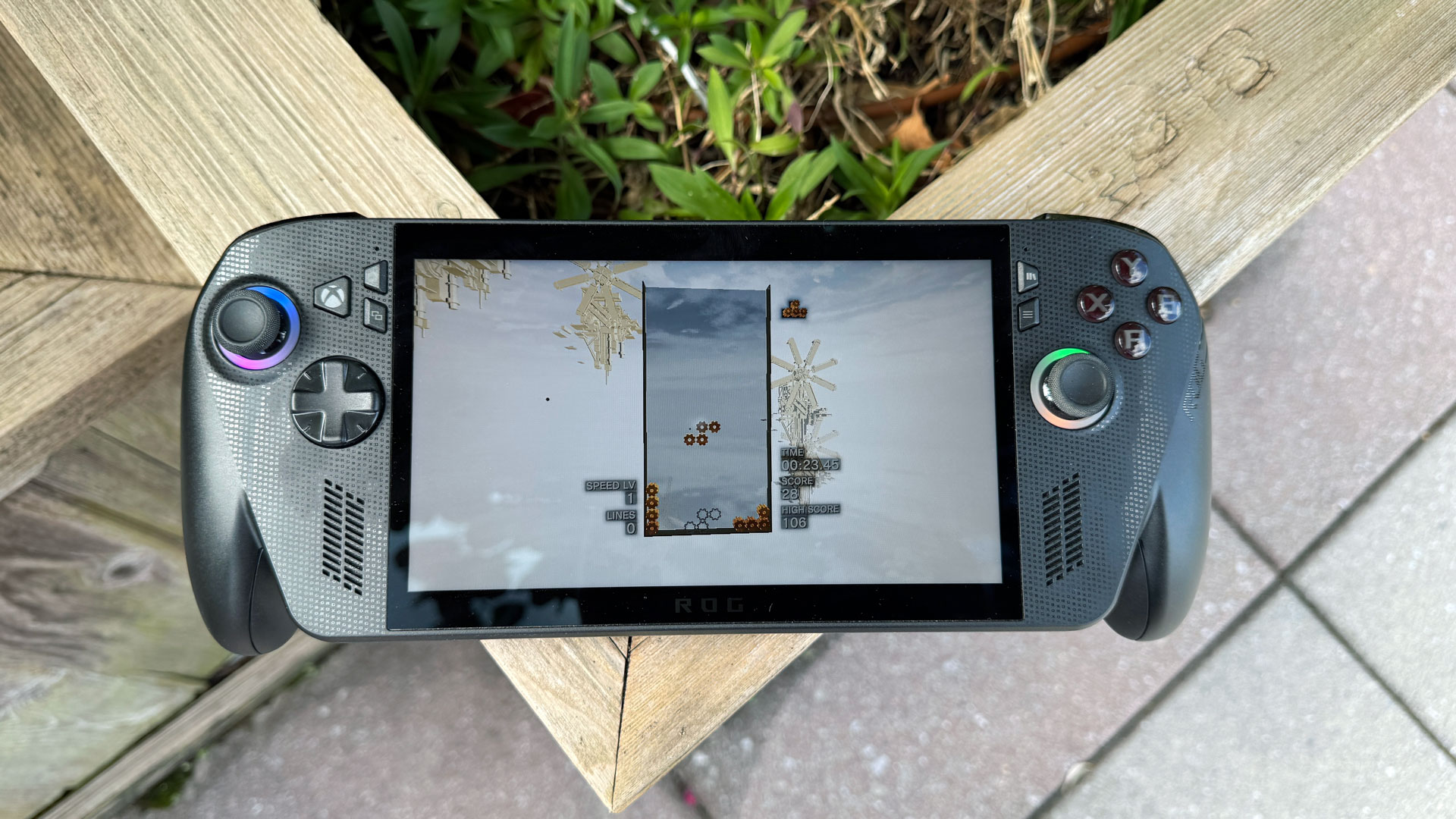
Specifications
Reasons to buy
Reasons to avoid
The worst part of Windows-based gaming handhelds, for a long time, was Windows 11. But the Asus ROG Xbox Ally X is the first PC gaming handheld with a new full-screen Xbox experience designed to be easier to launch games and adjust settings with a controller. There are still some bugs, but it's far and away better than the standard Windows desktop.That controller is more comfortable too, as Asus added controller grip-style prongs to each side of the handheld, so it feels great in the hands. The weight is balanced evenly, so the ergonomics here are top notch.
The AMD Ryzen AI Z2 Extreme and its RDNA 3.5-based integrated graphics offer a performance bump over last generation, particularly at lower resolutions. That may not be enough for some to upgrade, but it's definitely a nice bonus.
Where the system lacks is primarily in that it doesn't offer an OLED screen. Asus' IPS panel is bright and colorful, but it doesn't quite match some of the competition with the more vivid OLED technology.
Read: Asus ROG Xbox Ally X review
Best SteamOS Performance Handheld Gaming PC
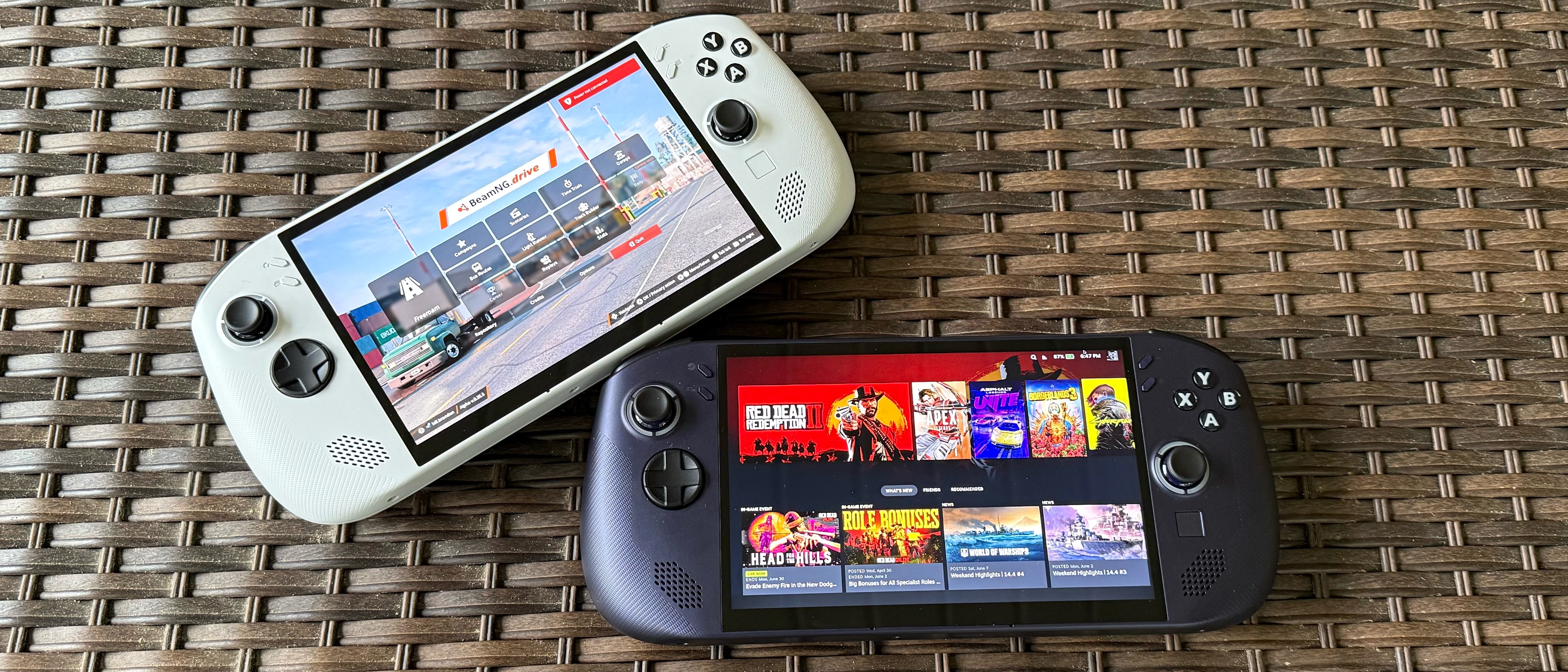
Specifications
Reasons to buy
Reasons to avoid
You don't need the Steam Deck to get SteamOS. The Lenovo Legion Go S is the first PC gaming handheld outside of Valve to get the OS, which is far easier than Windows to navigate with controllers and a touch screen.
Our time with the Legion Go S's Ryzen Z1 Extreme variant proved to deliver some of the best gaming performance we've seen on a handheld with the Z1 Extreme, 32GB of RAM, a 1TB SSD.
This system is effectively identical to the Windows version, except it comes with a purple-black "nebula color." It has a bright display and ergonomic design, even if it is made out of plastic.
But the $829 will put this out of reach for many. You may want to consider the cheaper Windows version and installing SteamOS instead. Alternatively, you can opt for the Z2 Go version, starting at $599, but you'll also get less RAM, less storage, and worse performance.
Read: Lenovo Legion Go S (SteamOS) review
Other Handheld Gaming PCs We Tested
We also tested a few other handheld gaming PCs which didn't make the grade as the best.
Switch-style Handheld Gaming PC
Specifications
Reasons to buy
Reasons to avoid
The Lenovo Legion Go 2 is about as full-featured a handheld as we've seen, with a fast, 144 Hz OLED display, detachable controllers, and the latest AMD Ryzen Z2 Extreme processor. The system, thanks to that chip, has made some impressive gains in performance at 1280 x 1800. This system is more ergonomic than the original Legion Go — the controllers are easier to hold with rounded edges. It also has Hall effect joysticks, which should help prevent stick drift. The cooling and large battery make for a heavy system, at just over 2 pounds. That may be enough to make you appreciate the kickstand.Lenovo's OLED screen is beautiful, and it's fast at 144 Hz. The only downside is that is very susceptible to glare, which isn't great for playing games outside or near windows.
At $1,349.99, this is one of the most expensive PC gaming handhelds that we've tested so far. But if you want all of the features you can pack into a device, including detachable controllers, it's one to consider.
Read: Lenovo Legion Go 2 review
How we test handheld gaming PCs
How we test Handheld Gaming PCs
Each gaming handheld we review goes through a series of tests and benchmarks to determine if it's worth your hard-earned money.
Currently, games that we run and may include in our reviews are:
Game | Preset | Header Cell - Column 2 |
|---|---|---|
Cyberpunk 2077 | Steam Deck | Row 0 - Cell 2 |
Borderlands 3 | Medium | Row 1 - Cell 2 |
Forza Horizon 5 | High, no anti-aliasing | Row 2 - Cell 2 |
Red Dead Redemption 2 | Lowest (Favor Performance) | Row 3 - Cell 2 |
Shadow of the Tomb Raider | Medium | Row 4 - Cell 2 |
Civilization VI: Gathering Storm - Graphics Test | Ultra | Row 5 - Cell 2 |
We also run a stress test, which currently consists of the Metro Exodus benchmark on the low preset, run 15 times in a loop while recording system statistics with HWInfo. (This is also when we take our heat tests). For productivity, we use Geekbench for single-core and multi-core performance.
We measure handheld gaming PC displays with our colorimeter and light meter, and report brightness in nits, as well as the volume of the DCI-P3 and sRGB color gamut that the screen covers.
Our battery test connects to a local web server over Wi-Fi, and continuously browses the web, runs simple OpenGL graphics tests, and streams videos. We report the amount of time the laptop ran the test in hours and minutes. However, because most people will be using the best gaming handhelds to play video games, we do anecdotal testing to see how the battery fares in real life.
We also spend significant periods of time using gaming handhelds to evaluate the displays, gaming performance, included software, and how they feel to use.
Additionally, we open handheld gaming PCsto determine which parts are user-replaceable, so that buyers can see what they are able to upgrade and repair down the line.
Handheld Gaming PC Shopping Tips
🎮 Displays only need to go so far
High resolutions and fast displays are nice on paper, but it's also a big draw on a battery. Considering that you'll play most games at 720p, don't be drawn to numbers above 1080p unless you plan on using this as a secondary computer.
🎮 Battery life will be limited
A mix of big screens, high-power chips, and intensive games means you're only getting a few hours of play, maximum.
🎮 Consider where you play games
If you just use Steam for PC gaming, the Steam Deck will make a ton of sense. But if most of your catalog is on Epic Games or GOG, you may want to start looking into Windows devices. (Alternatively, you can try installing other gaming-focused Linux projects, like Bazzite.)
🎮 Plug and play performance
While the Steam Deck gives you consistent performance plugged in and on-the-go, Windows handhelds perform better while they're plugged in, similar to the best gaming laptops.
Get Tom's Hardware's best news and in-depth reviews, straight to your inbox.

Andrew E. Freedman is a senior editor at Tom's Hardware focusing on laptops, desktops and gaming. He also keeps up with the latest news. A lover of all things gaming and tech, his previous work has shown up in Tom's Guide, Laptop Mag, Kotaku, PCMag and Complex, among others. Follow him on Threads @FreedmanAE and BlueSky @andrewfreedman.net. You can send him tips on Signal: andrewfreedman.01
